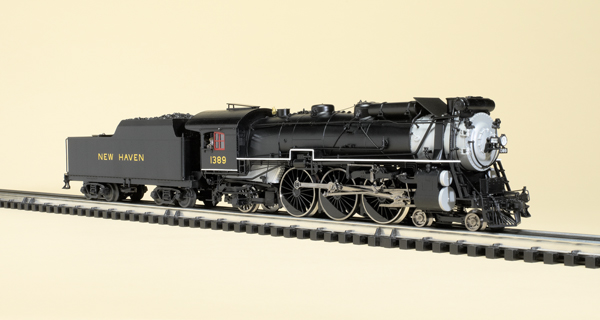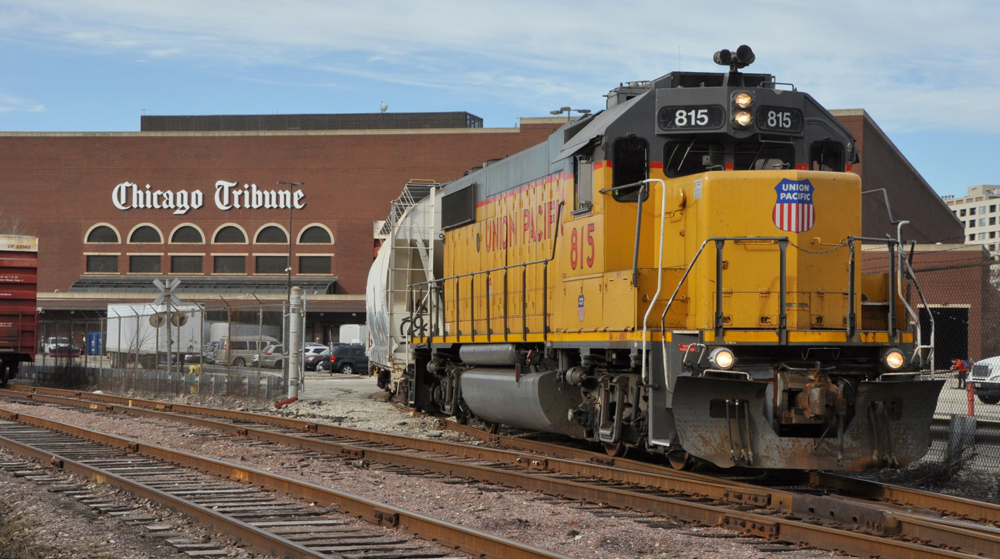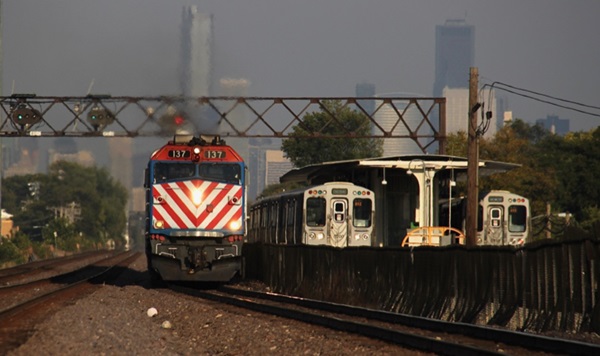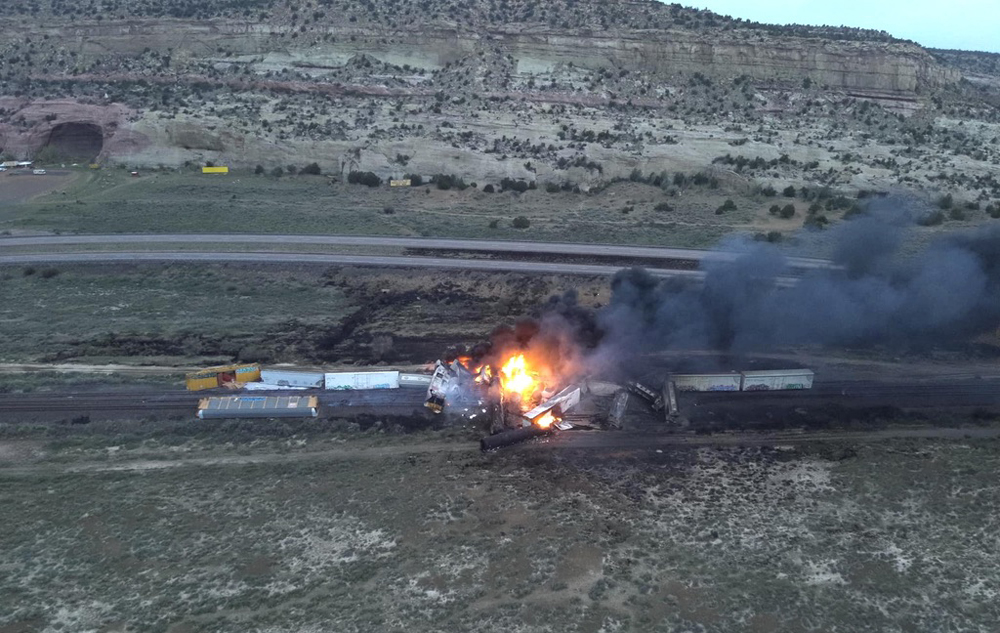One of the best New Haven designs was the I-4 class of 4-6-2 Pacifics. Fifty of those steam locomotives were delivered by Alco in 1916. The railroad and the manufacturer worked together to build an engine that could handle the heaviest passenger traffic on the line – and which could be a fill-in for freight power.
Don’t let the date of manufacture fool you; the railroad incorporated the best design elements of the day and continued to make upgrades to the I-4 class throughout its operational life.
The I-4 Pacifics continued to haul the best passenger trains the New Haven had to offer. Interestingly, according to J.W. Swanberg in New Haven Power, the addition of air-conditioning (and the weight of the cooling equipment) to passenger trains began to tax the performance of the I-4s. Nevertheless, World War II saw what might have been their finest hour – running more than 2 million miles as a fleet.
After the war, dieselization saw the Pacifics bumped from premier train service to secondary trains and finally to commuter service. The I-4s wrapped up regular steam operation on the New Haven in 1952.
Opening the box
I’ve often remarked that if you want to see detail, you’re going to find it on an O gauge steamer rather than a diesel. When I pulled this Weaver brass model out of the box, I muttered, “Hokey Smokes!”
While the first thing I usually check out is the pilot, not so in this case. The Elesco feedwater heater on top of the smokebox caught my eye, then the skateboard-ramp of a wind deflector behind the stack, and then the reservoir tanks behind the ramp! Wow. But let me get back to the pilot.
The front of the locomotive has a pleasing conventional look to it. The pilot has struts with cast-in rivet detail on the frame. There are steps on both sides of the pilot and add-on brake lines and an uncoupler arm. Steps leading to the running boards bracket the smokebox. The simulated scale-sized coupler sticks out about as far as the “cow-catcher” and allows this model to have an overall length virtually the same as the frame itself.
The white face of the smokebox door contrasts nicely with the black of the locomotive. The face has plenty of hinge and rivet detail. A grab iron runs from the 9 to 3 o’clock positions, and above them classification lights are mounted. A headlight and number board are in the center of the smokebox.
There is a conduit representing a power feed running out to the lamp.
On the top of the smokebox is a tube-shaped Elesco feedwater heater. A feedwater heater uses exhaust steam to preheat water before it enters a locomotive boiler to improve thermal efficiency.
There are three water lines angling down from the fireman’s side heater, and on the engineer’s side an upward line.
Behind the heater is a smokestack, and positioned behind the stack is a large flat ramp that would deflect wind up and force smoke higher.
The top of the boiler has a sand dome and steam dome. There are also gold-tone pop-off valves. The whistle and bell have lanyards running back to the cab. You’ll find a turbine on the left side of the boiler, and yes, there is an electrical conduit running forward to the headlight.
There is a particularly good-looking web of pipes, conduit, and sand lines on the fireman’s side of the boiler. You may miss it unless you look closely (or have really good illumination over your layout).Below the running board is a solid collection of pipes, drain lines, and compressors.
The locomotive cab has a raised roof hatch, and the windows have red-painted frames with glass inserts. The cab has a decorated firebox backhead with white-faced gauges, along with two crew figures. There are add-on grab irons on both the cab and the front of the tender.
The tender mirrors the prototype. It has rivets where appropriate, steps and grab irons on each corner, and a backup/marker light in the center of the rear. The coal load is “chunk style.”
The water hatch lifts to reveal the volume control and RailSounds/SignalSounds selector as well as the run/program switch.
The rear of the tender has a ladder and an uncoupler arm. The coil coupler is snug as a bug, placed tightly under the tender and avoiding the too common look of an extended coupler shaft popping out of the rear of the car.
Paint and decoration are excellent. The overall locomotive is black, with silver on the firebox, smokebox, and fronts of the steam chests. There is a white accent line on the edge of the running boards and the bottom of the cab. The New Haven numbering and name are done in a crisp golden yellow.
On the test track
The only bump with testing this model was the time-honored limitations of my bulky fingers and lack of dexterity! I found the tether to be a real bear to get connected. The space is a bit tight and the rear floor of the cab is rigid, so I had trouble aligning the male connector. The tether cable did pull out from the tender a bit, which helped considerably. The longer and thinner your fingers are, the better.
The locomotive operated well in both conventional- and command-control mode. The motor was smooth and quiet.
The I-4 is equipped with Lionel’s TrainMaster and RailSounds systems as well as the Electric Railroad Co.’s speed control. Smoke unit output was satisfactory.
Our conventional low-speed average was 4.3 scale miles per hour, and our command-mode low-speed average was 2.8 scale miles per hour. Motor operation was smooth in the low-speed range.
Our high-speed average was 63.6 scale miles per hour. I might have nudged it up a bit higher, but readers know my phobia about running $1,000 locomotives at high speeds on O-54 curves!
Drawbar pull was 1 pound 5 ounces.
This steamer packs a magnificent level of detailing and runs well. Hats off to Weaver Models for selecting a smaller locomotive, with a virtual smorgasbord of detail, to render into O scale.
Features: O-54 operation, brass construction, can-style motor, fan-driven smoke unit, Lionel’s TrainMaster and RailSounds systems, ERR Tachless speed control, rear coil coupler














